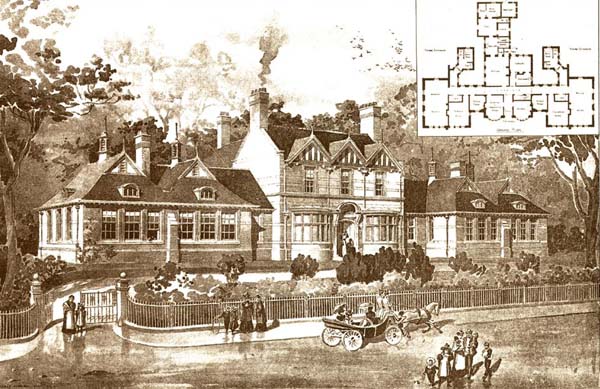As far back as 1882 attempts were made by the friendly societies and others in the Tilbury District to found a Cottage Hospital without success. 12 years later a request to Passmore Edwards was responded to both promptly and positively.

Up to 1895 a man meeting with an accident at the Tilbury Docks, or anyone taken ill in that vicinity, had to be taken to Gravesend or London Hospitals. Whilst we are beginning again to see greater distances of travel to the more Regional Hospitals provided by the NHS, at the end of the 19th Century, the distance involved cost, and risk. Since 1882 efforts had been made by the friendly societies and others to establish a Cottage Hospital at Tilbury to meet the growing needs of the area but always without success. It was not until 12 years later, when a Mr Ephriam Wright wrote to Passmore Edwards to secure his help. Passmore Edwards, after some inquiries responded by offering to supply a suitable building.
The necessary Committee was formed and soon received its first subscription of £500, and an offer to provide a site, from the Tilbury Dock Company. Rowland Plumbe FRIBA was appointed as architect and the foundation stone was laid by Passmore Edwards in October 1895. The 15 bed hospital was constructed opposite the Tilbury Dock gates and was opened by Passmore Edwards in June 1896.
As the docks expanded the Hospital Committee felt that a larger hospital, with more up to date equipment, was needed to meet the demands which were being made upon it. Accordingly, in 1924, the administration of the hospital was transferred to the Seamen’s Hospital Society and it was renamed Tilbury Hospital.
Dr J J S Rowe, who had been at the Society’s Dreadnought Hospital, Greenwich, was appointed as Resident Medical Officer. It was decided to increase the accommodation to 50 inpatients and also provide proper accommodation for outpatients. Prior to the transfer the local management Committee had provided an X ray machine and refurbished the operating theatre. The aquisition of the Tilbury Hospital meant that the Society was now responsible for the care of sick and injured seamen from the whole of the Port of London.
At the same time, a Mr Singhanee, of Poona, India, had offered a gift of one lakh of rupees (£6,732 in 1924) to provide a Ward for Indian seamen at a London Hospital. The Passmore Edwards Hospital had been chosen and the “Singhanee Ward” was nearing completion when the Society took over the reins in January 1924. This was opened by the Duke of York in June 1924.
The Ladies Linen League was formed in 1924 by local ladies to provide and maintain the linen and garments of the Hospital whilst the Dreadnought Ladies League raised funds for materials used in the wards.
The Duke of York also laid the foundation stone for the new buildings which were of a “modern” concrete construction, with “metal window frames”, constructed on concrete rafts due to the poor loadbearing capabilities of the land. The roofs were of red concrete tiles. Two new wards, of 22 beds each, and a nurses home were constructed, as well as updating the hospital equipment, at a cost of about £30,000. The Hospital was later to be known, locally, as the “concrete hospital”.
The original building retained the name of the Passmore Edwards Ward.
In July 1932, “The Grays and Tilbury Gazette and South Essex Pictorial Telegraph” contained a report on the financial pressures that faced the Hospital during the depression and called for renewed local support and assistance to continue the work of the concrete hospital.
The hospital survived the depression years and continue under the management of the Society until the formation of the National Health Service, in 1948, when the hospital was taken over by the South East Essex Hospital Management Committee, serving the then Urban Districts of Billericay and Thurrock, being then the only hospital for acute surgical cases in the committee’s area. In 1950 it became Tilbury branch of Tilbury and Riverside General Hospital (combining Tilbury and Orsett Hospitals), and as such recognized as a general training school for nurses. In 1953 the Orsett Hospital was chosen in preference to the Tilbury Hospital as the main hospital for Thurrock area. Inpatient work transferred to Orsett Hospital 1969. The building was demolished in 1985.









